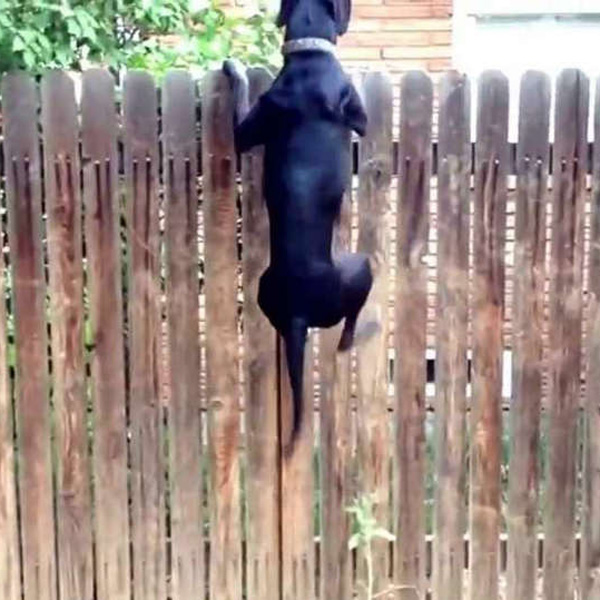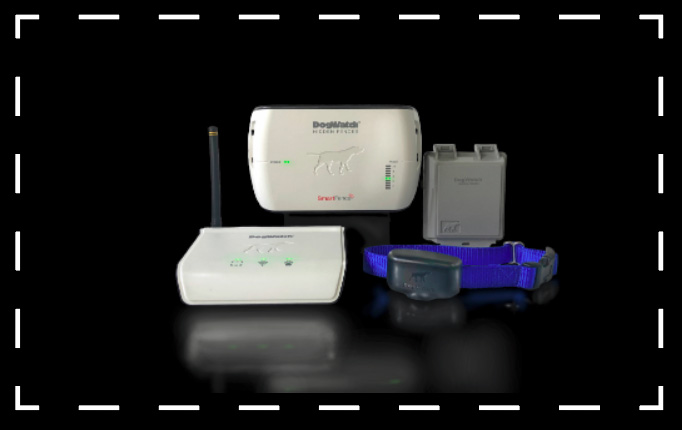DIY Dog Fences are a popular choice for pet owners because do it yourself dog fences are generally cheaper to build. Doing the work to build the fence yourself greatly reduces the labour cost of the dog fence, often reducing it to $0. There is often a financial advantage around the material cost of your dog fence too, as you are able to avoid substantial markups on the cost of raw materials.
If you are thinking about building a DIY Dog Fence, then you probably already have a dog or are thinking of getting another pet. When thinking about the type of fence to build, it is important to consider what type of fence will suit your pets needs best, while maintaining a balance with your families needs.
Types of DIY (Do it yourself) Dog Fences
So let’s look at some different types of dog fences:
1. Outdoor Dog Fence

By far the most common type of dog fence is the outdoor dog fence. Many pet owners like to give their dogs the ability to roam around outside. This is particularly important if you have a larger dog. Dogs need to move to burn off energy. They enjoy sniffing around the garden for stimulation and of course, it is preferable your dog toilets outside. Outdoor dog fences provide containment for your dog and keep other animals out. If you have a large dog you will need to consider the size of the fence before embarking on your DIY dog fence build. To clarify – big dogs need a big dog fence or they will find it easy to jump over the very dog fence you spent all those DIY hours building.
2. Indoor Dog Fence
Most people don’t immediately think about building a DIY dog fence. In fact, indoor dog fences can be quite inexpensive and useful DIY projects. The simplest example of this is the stair gate/dog fence. Fencing off your stairs is useful from a safety perspective, especially when your pet is a new puppy who would find it difficult to navigate the stairs. A dog fence on the stairs is also useful if you want to prevent your pet from roaming around upstairs rooms and bedrooms when you are not home, or if you designate them no go zones. DIY dog fences or gates for the stairs are quite easy to build. A timber frame and a few lengths of dowel will usually do the trick. You could also do it yourself using a flywire screen on a timber or metal frame. True DIY enthusiasts will probably want to paint the dog fence to match their interior.
Other indoor areas of the home can also include a physical dog fence to prevent the curious pet from wandering into the wrong area – for example, the pantry. The downside of this type of dog fence is it also provides a physical barrier to the members of your family, so this DIY fencing solution is not always preferred.
3. Solid Privacy Dog Fence
DIY enthusiasts will often decide to build their dog fence from solid materials which obstruct prying eyes. Privacy dog fences are typically built from materials such as wood, metal, vinyl or Colorbond. Privacy fences can be either very good for your dog or very bad, depending on their temperament. If your dog barks at every little thing that goes by, then a privacy dog fence can work well as your dog won’t see everything going on. On the other hand, your dog may suffer from a lack of stimulation and boredom if the dog fence prevents them from seeing what is happening. This can lead to further behavioural problems. Some pet owners install a DIY perspex viewing window in the dog fence, which gives their dog the best of both worlds. Before getting out your DIY tools and building a solid dog fence, you will need to give some real consideration to your dog’s personality and the lifestyle of your family.
4. Virtual/Hidden Dog Fence
A virtual or hidden dog fence is cheaper than traditional dog fences and is also very easy to DIY install. The key to this DIY project is to carefully measure the containment area to make sure you accurately order all the components you need.
This handy link will help you choose what you need for your DIY dog fence project:
A Hidden Fence is very easy for DIY enthusiasts to set up and can be a valuable training tool and containment system for your dog. These types of dog fences can be easily installed over all types of terrain when installed outdoors. There are also suitable configurations for indoor use, easily installed with minimal DIY fencing experience.
5. Combination Dog Fence
Many dog owners use a combination of strategies for effective DIY dog fencing. The choice of dog fence really depends on what is best for your dog. It is all about finding the right balance; balancing safety, behavioural outcomes, aesthetics and lifestyle.
A combination dog fence is commonly used when a new pet is introduced to an existing family home. Often fences will already be in place but do not work well as an effective dog fence. For example, a fence may already exist but it is too low, easily jumped over by a larger dog, Virtual or Hidden Fences can be easily DIY installed on an existing fence to add another layer of containment as well as adding audible and stimulation behavioural cues.
The choice of which type of DIY dog fence really comes down to what is best for your dog and your family. If you are not sure about what type of dog fence to install, talk to our friendly team about some options. We can help you come up with a solution that effectively contains and trains your dog while keeping them safe and happy. All our dog fence solutions will include a DIY dog fence option. Alternatively, we can install your dog fence for you and provide you with full training.
If you are interested in talking about a Hidden Fence to keep your dog at home please contact us



